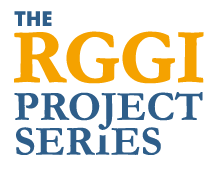2012-2014 REPORT
The Economic Impacts of the Regional Greenhouse Gas Initiative on Nine Northeast and Mid-Atlantic States
BY Analysis Group | July 2015
The second in a series of economic analyses by the Analysis Group, this report examines the impacts of RGGI for the period 2012-2014, the second compliance period, and finds that the multi-state, market-based approach to cutting carbon emissions provides economic benefits and valuable lessons to other states as they evaluate their options for cutting carbon.
During this period, the electric industry experienced changes in power plant economics, emission-control requirements, and wholesale market structures in the RGGI region. In addition, the RGGI states completed a comprehensive program review during 2012, and modified elements of the program including, most importantly, adopting a significantly lower overall cap on CO2 emissions in the RGGI region. In light of all of these changes, this report not only examines the program’s performance in the 2012-2014 period, but also reviews whether and to what extent the lessons learned from the first economic analysis should be altered to reflect the economic realities of the three most recent years.
This programmatic and quantitative economic review addressed several critical questions including the feasibility and value of multi-state approaches to controlling CO2; the ability of states to work cooperatively and effectively together; and the ability of market-based allowance trading programs with state-driven auctions and local reinvestment of auction proceeds to help states reduce carbon while generating positive economic benefits.
KEY FINDINGS:
Added $1.3 billion in economic value to the nine-state RGGI region
Will lead to more than 14,000 new jobs
Reduced electricity and heating bills, saving consumers $460 million
Provided each individual state economic benefits as the region cut annual carbon emissions by more than a third from 2008 (133 million tons) to 2014 (86 million tons)
Reduced dollars flowing out of state to pay for fossil fuels imported from outside the region by more than $1.27 billion
KEY LESSONS
The positive impacts of RGGI on state economies are additive to the purpose and expected benefits of the program.
The RGGI model has successfully achieved CO2 reductions through a cooperative framework that preserves state authority.
Mandatory, market-based carbon-control mechanisms are functioning properly in wholesale markets and have not affected power system reliability.
The design of the CO2 market in the RGGI states allows for the creative use of public funds, supporting diverse state policy and economic outcomes.
How allowance proceeds are used affects their economic impacts: use of auction proceeds to invest in energy efficiency produces the biggest bang per buck, in terms of net positive benefits to consumers and to the economy.
